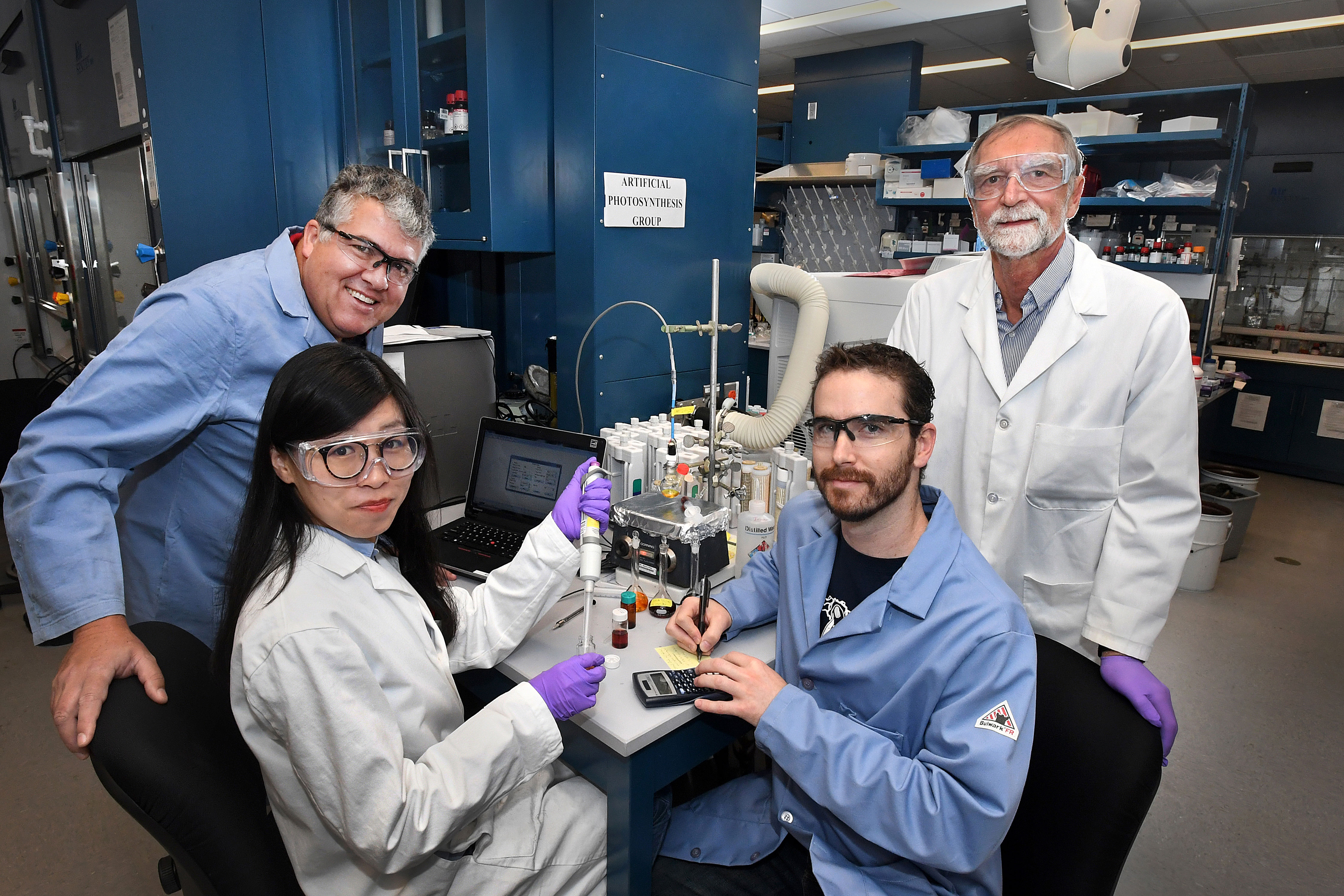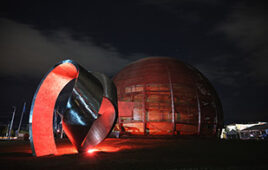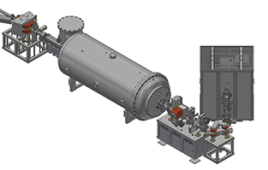
Research team leader Javier Concepcion (standing, left) with Yan Xie, David Shaffer, and David Szalda.
Chemists at the U.S. Department of Energy’s Brookhaven National Laboratory have designed a new catalyst that speeds up the rate of a key step in “artificial photosynthesis” — an effort to mimic how plants, algae, and some bacteria harness sunlight to convert water and carbon dioxide into energy-rich fuels. This step — called water oxidation — releases protons and electrons from water molecules, producing oxygen as a byproduct.
This “single-site” catalyst — meaning the entire reaction sequence takes place on a single catalytic site of one molecule — is the first to match the efficiency of the catalytic sites that drive this reaction in nature. The single-site design and high efficiency greatly improve the potential for making efficient solar-to-fuel conversion devices.
“The end goal is to break out those molecular building blocks — the protons and electrons — to make fuels such as hydrogen,” says David Shaffer, a Brookhaven research associate and lead author on a paper describing the work in the Journal of the American Chemical Society. “The more efficient the water oxidation cycle is, the more energy we can store.”
“Water is very stable,” says Brookhaven chemist Javier Concepcion, who led the research team. “Water can undergo many boiling/condensing cycles and it stays as H2O. To get the protons and electrons out, we need to make the water molecules react with each other.”
The catalyst acts as a chemical handler, shuffling around the water molecules’ assets — electrons, hydrogen ions (protons), and oxygen atoms — to get the reaction to happen.
Source: Brookhaven National Laboratory




